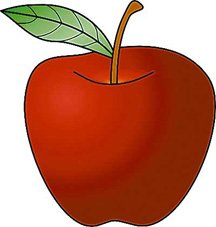Our favorite thing about fall is apple picking, so you can imagine how happy we are that area orchards are letting the public loose for pick-your-own fun.
Picking your own apples isn't complicated by any means, but during a recent visit to Carter Hill Orchard, we got to thinking: How do you know if an apple is ripe? What's with all those apples on the ground? What happens to the apples on the very top of the tree, where people can't reach?
We tracked down answers to these questions and others with the help of Rob Larocque of Carter Hill Orchard, Diane Souther of Apple Hill Orchard and some old-fashioned internet research.
We hope you find these tips helpful as you set out to pick your own apples.
You may feel free to thank us with batches of apple crisp (with vanilla ice cream, please).
I can’t stand seeing all those perfectly good apples lying on the ground. What happens to them?
According to Rob Larocque, the apples that are in good shape are picked up and sold as seconds. The rest are ground up and raked back into the ground. Soil helps break down the apples more quickly, an nice alternative to just letting them rot. He adds that getting them off the ground means people won’t have to step in them. There are worse things to step on, but we appreciate it nonetheless.
Is there a correct way to pick apples or does anything go?
There is a proper way to pick. Diane Souther of Apple Hill Farm was kind enough to answer this one for us:
“Always look before you select the apple you want to pick. Find the perfect one and gently place the whole palm of your hand around it. With slight pressure, squeeze the apple and start to twist if from the tree. Sometimes, if you roll it upside down, the stem will gently release from the branch. It’s important to try to pick the apple without the leaves and making sure to leave the small fruit bud intact on the tree for next years crop. After selecting and picking off, place the apple ever so lightly into your picking bag to issue that you do not bruise the soft flesh of the apple.”
How can you tell if an apple is ripe?
We posed the very same question to Rob, who told us the best way to tell is to taste the apple – coloring really doesn’t enter the equation. When you get to the orchard, a staff member can advise you on what varieties are ripe, so there’s no need to nibble on every apple.
What’s with those teeny-tiny apples?
Those apples were not pollinated, says Rob, but they’ve managed to grow a bit. If you cut them open, you probably won’t see any seeds.
What’s the best way to store apples?
Apples stay fresh longer when kept in a cool place, like the refrigerator. To help them last even longer, don’t wash the apple until you’re ready to eat it, and be careful not to bruise your apples – bruised apples will rot more quickly.
How much weight am I really lugging around in those “per peck” bags?
A ¼ peck is about 3 lbs., a ½ peck is 6 lbs., 1 peck is 12 lbs., a ½ bushel is 24 lbs. and 1 bushel is 48 lbs. So, if you’re going to pick a ½ bushel of apples, bring a wagon. Also, feel free to consider apple picking a bonafide workout.
What’s the deal with organic apples?
Ah, an excellent question. It’s so excellent, we didn’t actually ask it. Diane Souther brought this one up, and provided an answer for us, which was awfully nice of her. Here’s the scoop on organic apples:
“Organic production, contrary to popular belief, can be sprayed. The pesticides that are used in organic production have be approved by an independent organization called the Organic Materials Review Institute. The vast majority of OMRI materials are ‘naturally derived.’ It is important to note that all things in nature are not necessarily benign. Copper is a widely used OMRI approved organic fungicide, but at the rates required to be effective will, in a matter of a few years, leave soils with copper levels that would exceed the allowable limits for sewage disposal sites!”
For detailed information on pesticides and fungicides used on organic apples, talk to the grower. They would be happy to answer your questions.









